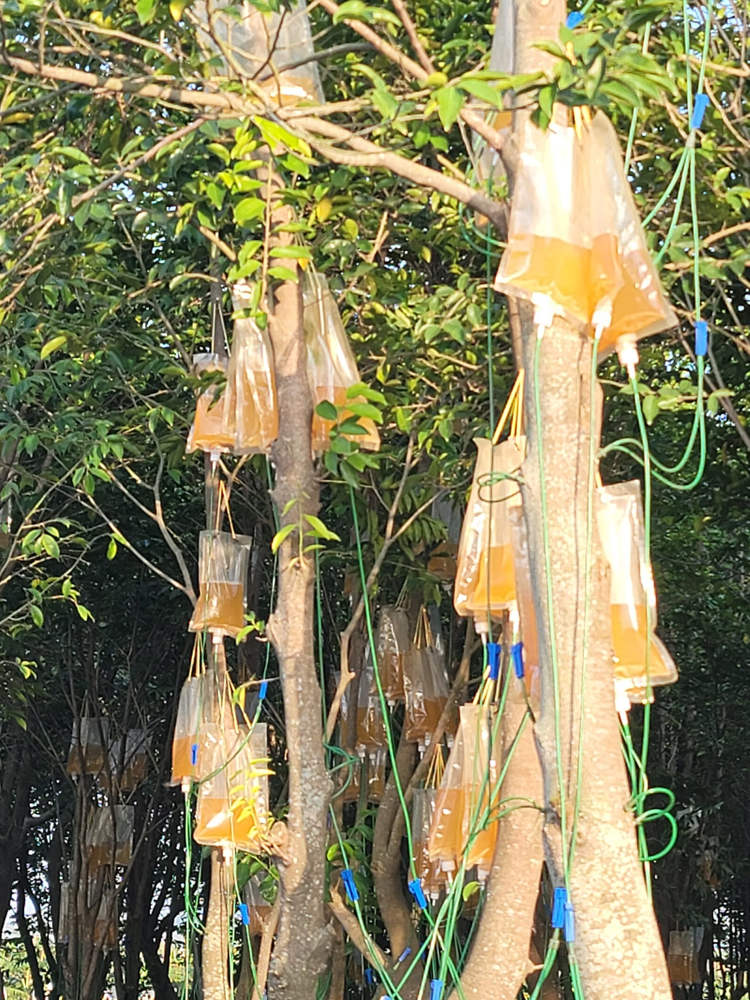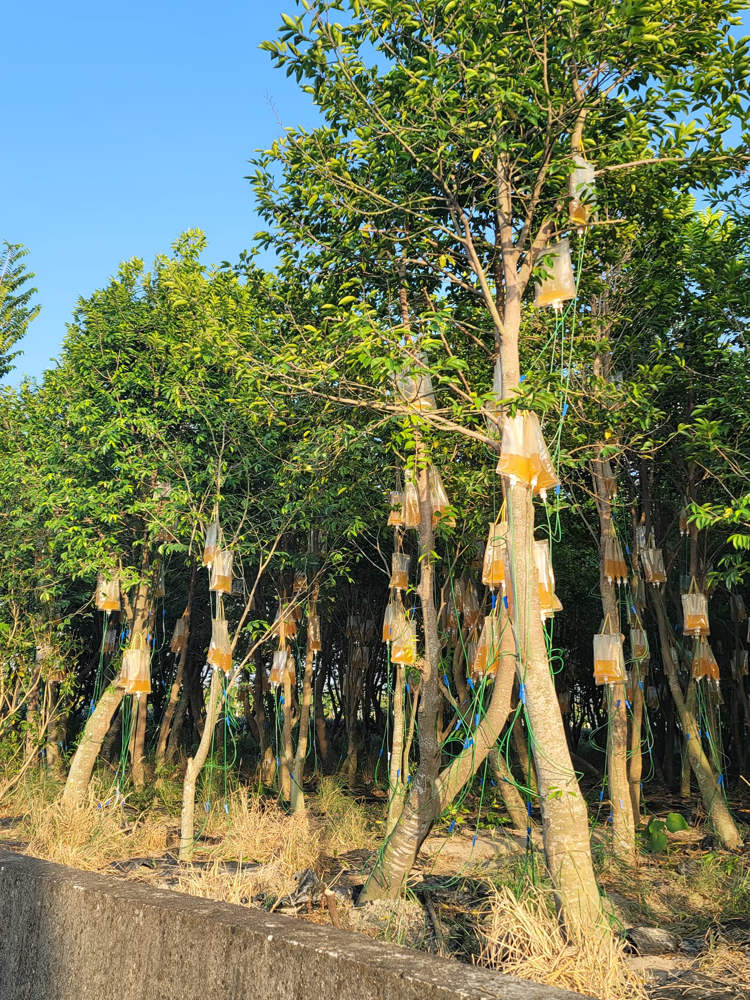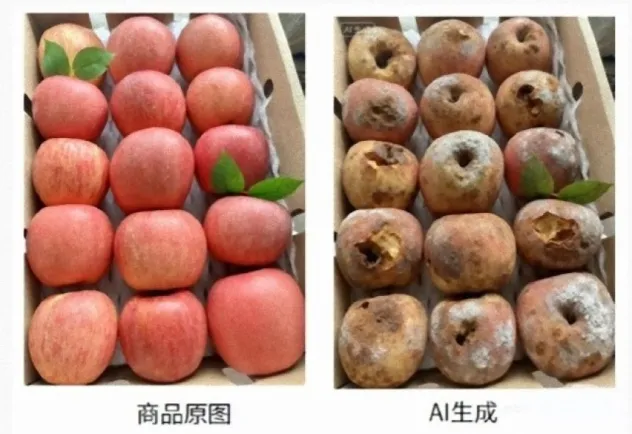IV therapy is usually associated with curing illnesses, but when it comes to creating the world’s most expensive wood, IV drips are a means of delivering poison.
About a week ago, a couple of photos showing large IV drips filled with a dubious-looking liquid hanging from trees went viral on Chinese social media, prompting all kinds of reactions from people. Some wondered if it was an art installation designed to raise awareness about the rampant deforestation taking place on a global scale, or about the human-made pollution killing plant life, while others were convinced that it was a genuine treatment method designed to save the trees from fungi or other parasites. There were even those who said it was vandalism, that the bags were filled with human urine. All of these theories turned out to be wrong.

Photo: Facebook
Originally posted on the “Road Observation Academy” Facebook group, the two photos showed dozens of large IV bags hanging from the branches of trees and green tubes with large needles that went into the tree trunks. But it turns out that the liquid inside the bags is no treatment, but a poison designed to activate the tree’s self-defense mechanism and thus create the world’s most expensive wood.
Kynam, or “kyara” as it’s known in Asia, is an extremely rare type of agarwood (oud) used in the perfume and incense industries for its complex and very strong fragrance. Interestingly, the heartwood of the aquilaria tree is relatively odorless, but in certain conditions, the tree produces a type of dark resin that creates precious agarwood. And that’s where the IV therapy comes in…

Photo: Facebook
For hundreds of years, humans have known that aquilaria only produces agarwood in response to a type of stress, but it was only recently identified as ‘phialophora parasitica’, a type of mold. At one point, we also learned that we could artificially infect aquilaria trees with this parasite to stimulate the production of the precious resin, and there are now agarwood plantations all over Asia, from Indonesia to Myanmar and Vietnam.
Although plantation agarwood isn’t as expensive as wild agarwood, which can be hundreds of years old, it is still considered one of the most expensive materials in the world.












